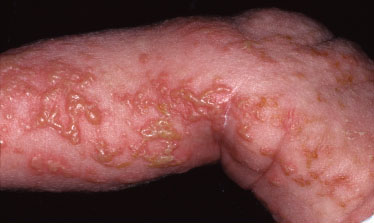* * *
an X-linked dominant syndrome, usually lethal in utero to males, caused by mutation in the IKBKG gene (locus: Xq28), resulting in a mosaic pattern in which cells expressing the mutant chromosome die and are replaced by cells expressing the normal chromosome. In surviving infants, onset is at birth or shortly thereafter and proceeds through four phases, which may overlap. The first is characterized by erythematous linear streaks and vesiculation; in the second phase, the vesicles become dry and hyperkeratotic and form verrucous plaques. The third phase is characterized by hyperpigmented cutaneous lesions such as brown or gray-brown bands, whorls, swirls, or splatterlike patterns, which generally disappear by age 20. The fourth phase is marked by the appearance of hairless, anhidrotic, hypopigmented patches or streaks. It is often associated with developmental anomalies involving other structures such as the hair, eyes, skeletal system, and central nervous system. Called also Bloch-Sulzberger i. pigmenti and Bloch-Sulzberger syndrome.
 Whorled pattern of vesicles in incontinentia pigmenti.
Whorled pattern of vesicles in incontinentia pigmenti.
Medical dictionary. 2011.